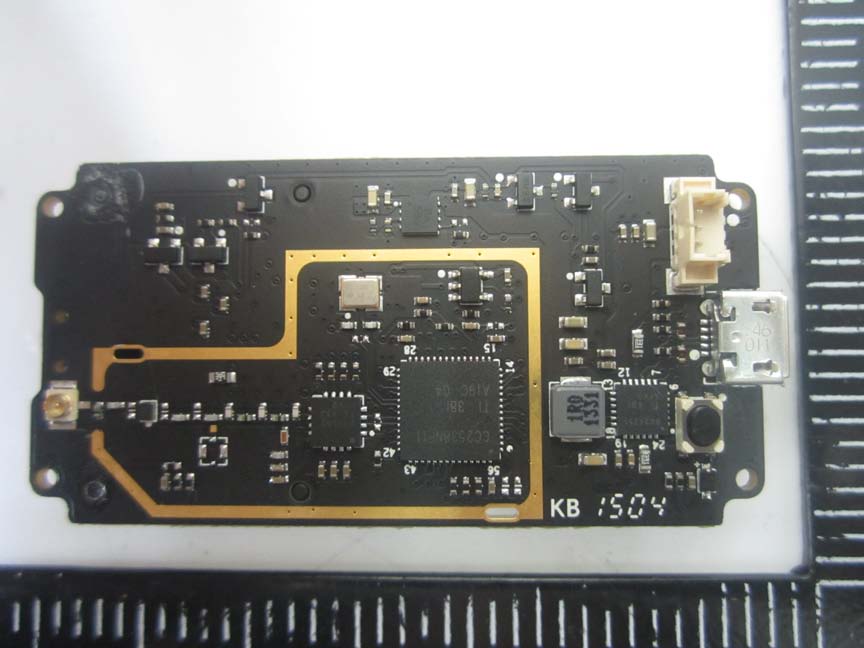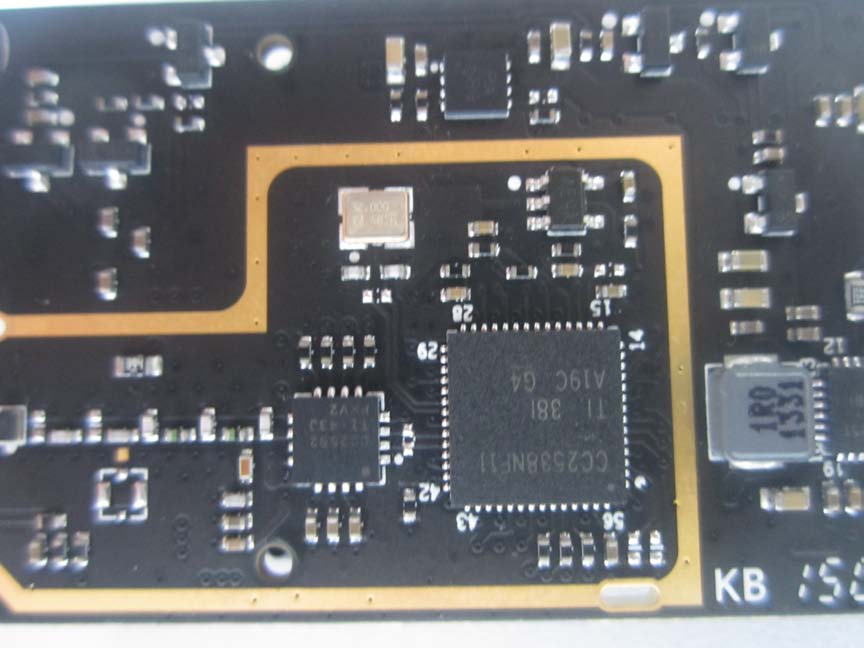Introduction
The DJI Thumb Controller (Model: RONIN TC, FCC ID: SS3-800TC1504) represents DJI’s commitment to enhancing user experience and precise control for Ronin series handheld gimbal users. Specifically crafted for filmmakers and content creators, this compact controller provides intuitive, wireless command over the pan, tilt, and roll motions of DJI Ronin gimbals. With its sleek design, pressure-sensitive stick, and crystal-clear OLED display, the Thumb Controller empowers users to achieve professional-grade cinematic shots effortlessly.
Bearing the FCC ID SS3-800TC1504, the Thumb Controller complies with stringent FCC regulations for electromagnetic interference and RF emissions. Although no specific grant date is listed, the official FCC certification signifies legal authorization for sale and use in the United States, assuring users of safety, reliability, and adherence to regulatory standards.
This detailed analysis dives deep into the device’s key specifications, wireless technologies, internal hardware components, and regulatory insights, providing professional videographers and tech enthusiasts with an authoritative look at DJI’s innovative accessory.
Key Features & Specifications
The DJI Thumb Controller (RONIN TC) offers an impressive suite of features designed for precision control and ease of use:
- Pressure-sensitive control stick: Allows nuanced adjustments to gimbal movements.
- Operating frequency: 2.415GHz – 2.454GHz, ensuring stable and reliable wireless connectivity.
- External receiver for Ronin / Internal receiver for Ronin-M: Optimized compatibility across DJI Ronin models.
- Communication distance: Up to 60 meters, providing ample range for remote operation.
- Quick-release accessory mount: Convenient installation on handlebars or rigs.
- OLED Display: 0.96-inch display with 128×64 resolution, clearly indicating menus, status, and settings.
- Bluetooth Present: Wireless connectivity capabilities (specific Bluetooth details not provided).
Technical specifications from the user manual and FCC documents include:
- Operating Temperature: -20°C to 55°C, suitable for diverse filming environments.
- Battery Life: Up to 18 hours continuous use, standby time of 20 hours.
- Battery Capacity: 1150mAh lithium polymer battery ensures extended operational periods.
- Mounting Bracket Diameter: Compatible with 1.0 inch (25mm) or 1.2 inch (30mm) handlebars.
- Working Current: Less than 100mA at 3.3V, highlighting energy efficiency.
These specifications underline the controller’s robust design, optimized for professional filming scenarios requiring reliable control, intuitive operation, and dependable wireless connectivity.
Operating Frequencies
The DJI Thumb Controller operates within the following frequency parameters as detailed in its FCC filing:
| Frequency Range (GHz) | Output Power (mW) | FCC Rule Part |
|---|---|---|
| 2.415-2.454 | 7 | 15CCC2.1 |
These frequencies indicate the device’s use of common 2.4GHz bands, frequently utilized in Bluetooth and proprietary RF communication technologies, balancing effective range, minimal interference, and optimal power consumption.
Technology Deep Dive
The DJI Thumb Controller leverages wireless technology within the 2.4GHz spectrum, a popular band known for its balance of range, penetration, and low interference characteristics. The absence of explicit equipment class information suggests a proprietary RF protocol or standard Bluetooth implementation. Operating in this frequency range provides reliable connectivity up to 60 meters, ideal for filming applications requiring precise remote control without line-of-sight restrictions.
The controller’s low output power (7mW) reflects an optimized design for minimal power consumption, extending battery life considerably. Users benefit from reduced interference risks and consistent performance, especially in crowded RF environments commonly found on film sets and event venues.
In-Depth Internal Component Analysis / Teardown
The primary processing unit, prominently featured, is likely a microcontroller or SoC positioned centrally on a sophisticated black PCB. Given its placement, this IC handles critical input processing from the pressure-sensitive stick. The PCB exhibits multi-layer construction—likely 4 layers—indicating careful consideration for signal integrity and RF performance. A wire antenna, soldered directly to the PCB, supports wireless communication within the 2.4GHz band, while a micro USB connector and battery connector are visible for charging and power management. The overall design demonstrates meticulous attention to reliability, signal quality, and efficient power regulation.

Focusing on the display and user interface, this PCB segment shows a simplified layout primarily supporting the OLED screen and touchpad functionality. A ribbon cable connects the OLED display efficiently, and the PCB’s compact design emphasizes cost-effectiveness and space-saving. The absence of visible RF components or shielding points to a dedicated user interface board, optimized for straightforward and intuitive interaction, aligning perfectly with the controller’s primary purpose.

The STM32F103 microcontroller from STMicroelectronics stands out clearly here, indicating robust processing capabilities for control inputs and possibly communication protocols. Complemented by visible power regulation components like inductors and capacitors, the design emphasizes stable, efficient power delivery. A crystal oscillator ensures precise timing, essential for accurate control signals and wireless communication synchronization. The PCB layout, with its distinct separation of power and signal lines, showcases a high-quality build aimed at reliability and low EMI susceptibility.

Highlighting wireless capabilities, the PCB integrates a prominent trace antenna optimized for 2.4GHz operation, essential for maintaining stable RF communication. Visible test points (TX, RX, TCK, TMS, RESET) facilitate efficient debugging and firmware programming during manufacturing. The presence of a large FPC connector suggests modularity, supporting easy assembly and maintenance. Overall, this PCB section underscores a practical, modular design approach targeting reliable wireless control and straightforward manufacturing processes.

The sophisticated IC labeled ‘C2538BNL1’ likely serves as the core processing or RF communication component. Its dense, multi-layer PCB with gold-finished traces (ENIG) reflects a premium design approach, ensuring high reliability and performance. The presence of power regulation inductors and capacitors, along with a crystal oscillator, further emphasizes precise power management and timing accuracy. This PCB assembly clearly prioritizes performance, reliability, and robust wireless communication, essential for precise gimbal control.

Regulatory Insights & FCC Filing
The FCC ID SS3-800TC1504 confirms DJI’s Thumb Controller meets rigorous U.S. electromagnetic interference and RF emission standards, legally authorizing its sale and use. FCC filings typically include comprehensive test reports covering RF exposure, EMC compliance, device photographs, internal component images, user manuals, schematics, and block diagrams.
According to the user manual, the Thumb Controller seamlessly integrates with DJI Ronin series gimbals, providing intuitive control over pan, tilt, and roll movements. Firmware updates and device tuning are conveniently performed via DJI Assistant apps, ensuring ongoing performance optimization.
Potential Use Cases & Target Audience
Designed specifically for DJI Ronin handheld gimbal users, the Thumb Controller proves invaluable in various filmmaking scenarios:
- Professional filmmakers: Achieve cinematic camera movements with precision control from a distance, ideal for complex action sequences or smooth tracking shots.
- Event videographers: Quickly adjust gimbal orientation during live events, ensuring optimal framing without physical access to the gimbal.
- Solo videographers: Operate the gimbal remotely while managing other production aspects, streamlining workflow and enhancing productivity.
The pressure-sensitive stick and OLED display combine to offer unprecedented intuitive control, empowering content creators to elevate their visual storytelling capabilities.
Conclusion
DJI’s Thumb Controller (FCC ID SS3-800TC1504) is a sophisticated accessory designed to enhance the filming experience for DJI Ronin users. Its FCC certification underscores its compliance with essential regulatory standards, ensuring safe and reliable operation. With robust wireless connectivity, precision control, and thoughtful internal design, this controller firmly establishes itself as a critical tool in the arsenal of professional filmmakers, videographers, and content creators seeking unparalleled control and cinematic excellence.